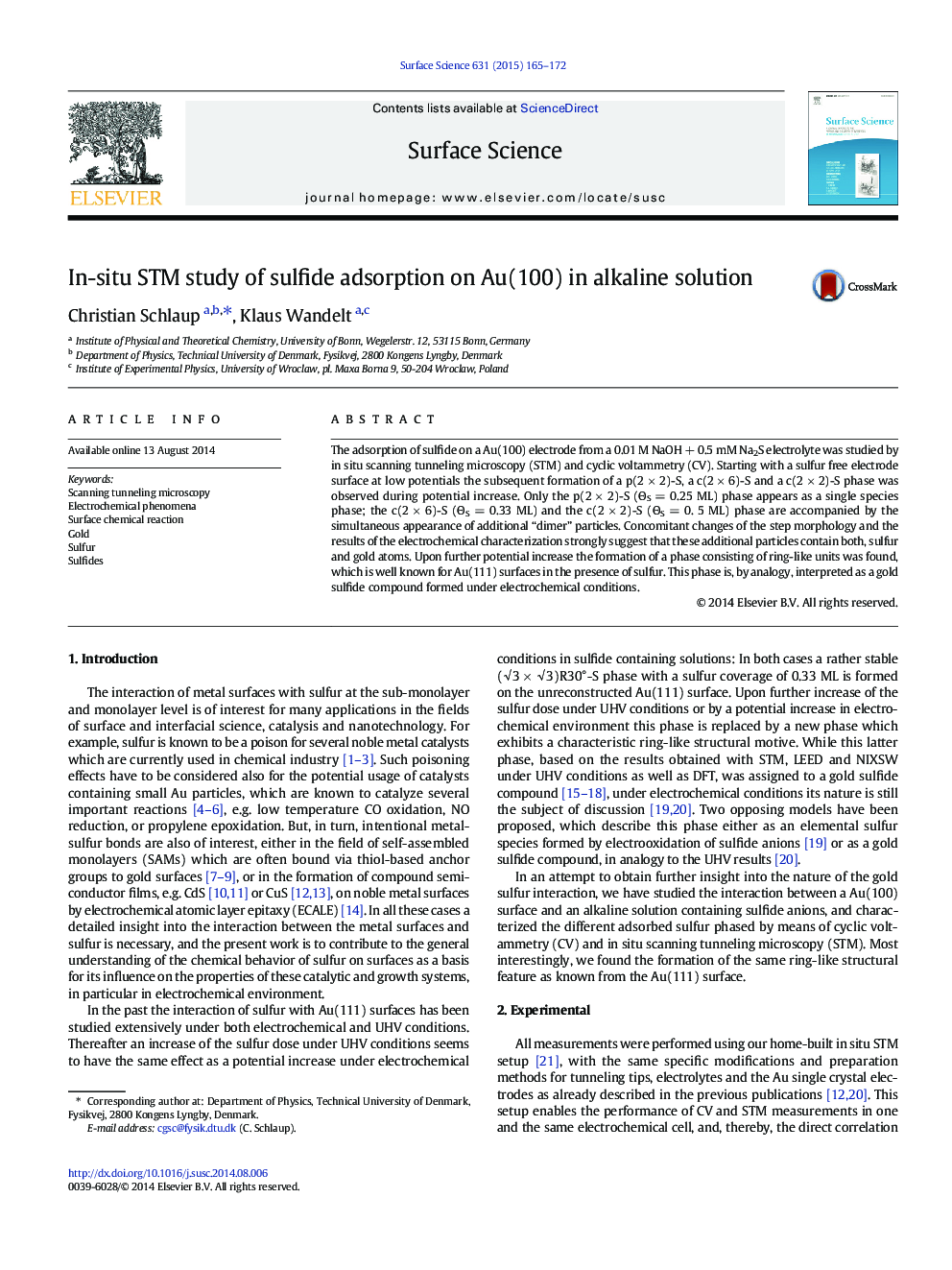| Article ID | Journal | Published Year | Pages | File Type |
|---|---|---|---|---|
| 5421952 | Surface Science | 2015 | 8 Pages |
Abstract
The adsorption of sulfide on a Au(100) electrode from a 0.01Â M NaOHÂ +Â 0.5Â mM Na2S electrolyte was studied by in situ scanning tunneling microscopy (STM) and cyclic voltammetry (CV). Starting with a sulfur free electrode surface at low potentials the subsequent formation of a p(2Â ÃÂ 2)-S, a c(2Â ÃÂ 6)-S and a c(2Â ÃÂ 2)-S phase was observed during potential increase. Only the p(2Â ÃÂ 2)-S (ÎSÂ =Â 0.25Â ML) phase appears as a single species phase; the c(2Â ÃÂ 6)-S (ÎSÂ =Â 0.33Â ML) and the c(2Â ÃÂ 2)-S (ÎSÂ =Â 0. 5Â ML) phase are accompanied by the simultaneous appearance of additional “dimer” particles. Concomitant changes of the step morphology and the results of the electrochemical characterization strongly suggest that these additional particles contain both, sulfur and gold atoms. Upon further potential increase the formation of a phase consisting of ring-like units was found, which is well known for Au(111) surfaces in the presence of sulfur. This phase is, by analogy, interpreted as a gold sulfide compound formed under electrochemical conditions.
Keywords
Related Topics
Physical Sciences and Engineering
Chemistry
Physical and Theoretical Chemistry
Authors
Christian Schlaup, Klaus Wandelt,
